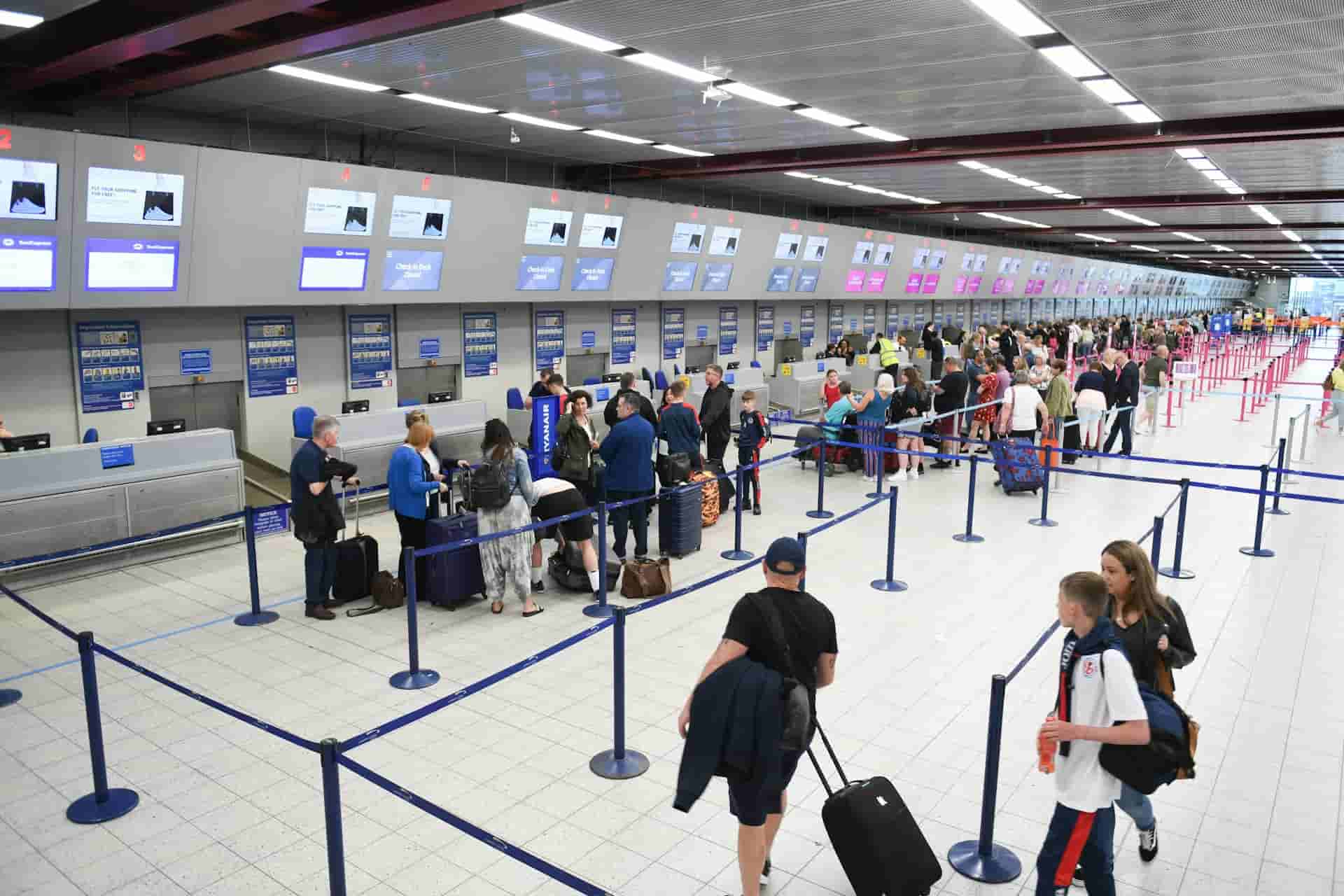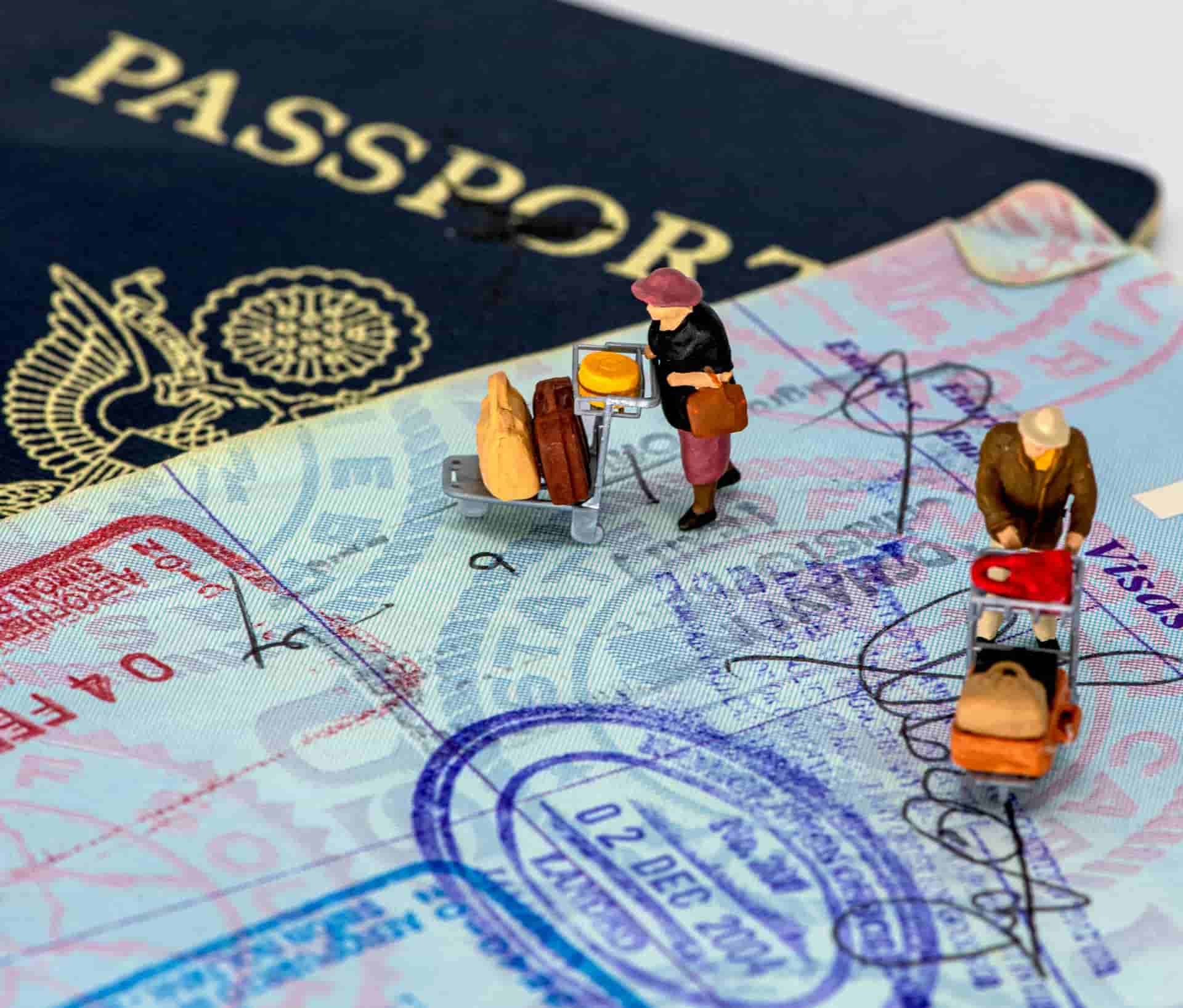What is the EU Entry/Exit System (EES)?
The EES is the European Union’s major digital overhaul of how it monitors non-EU citizens, including UK nationals, students, and professionals, entering and leaving the Schengen Area. Launched in a phased approach starting October 2025, the EES replaces the old, manual passport stamping process with a sophisticated digital tracking system.
Its core purpose is to modernise border security and efficiency by creating a central database connected to every external Schengen frontier (including airports, Eurostar terminals, and the Port of Dover). The first time you use it, you will create a digital record by providing biometric data, specifically a facial scan and four fingerprints (children under 12 are exempt from fingerprints).
This is primarily designed to crack down on identity fraud and strictly enforce the “90 days in any 180 days” visa-free limit. For students and business travellers who frequently commute to Europe, the EES automatically tracks your remaining days. While the long-term goal is faster automated gates, be prepared for potential initial delays at the border while the system is fully rolled out. Subsequent trips will be much quicker, as the system will check your face against your existing digital file.
How the EES Affects Travelling to and from the UK
It is vital to note that the EES does not apply when you enter the UK, as Britain is neither a member of the EU nor the Schengen Area. The system is entirely focused on the EU’s external borders.
However, for international students and professionals in the UK, from London renters to corporate short-term residents, the EES applies every time you leave the UK for a trip into the Schengen Area (for example, a business visit to Germany or a weekend break in Paris).
On your first journey, you will need to register your biometrics. This usually involves using a dedicated kiosk at your departure point, such as St Pancras International or the Port of Dover, where you scan your passport, provide fingerprints, and take a facial photo. Once registered, subsequent trips become much smoother, requiring only a quick face-check at automated gates or a border guard’s desk to verify your identity against your digital file. Remember that not all border points will be fully operational during the initial phased rollout, so checking your route in advance is highly recommended.
What International Students and Professionals Need to Know
For the thousands of international students, corporate transferees, and professionals who call the UK home, the EES will make cross-Channel trips to destinations like Paris, Amsterdam, or Madrid easier.
What to Expect
The EES is an additional step at the border. You do not need to pre-register or apply for anything in advance; there is no fee. However, the first time you cross an EU border after October 2025, expect potential longer queues as your biometric data is captured for the first time.
Preparation is Key
- Documentation: Always carry a valid passport and any documents proving your right to reside, work, or study in the UK (e.g., your UK visa vignette, Biometric Residence Permit/BRP, or digital status confirmation). While EES is an EU system, border guards may request these to verify the purpose of your journey.
- UK Residents vs. EU Citizens: If you hold an EU passport, you can continue to use dedicated EU lanes, bypassing the EES checks entirely. You must complete the EES registration if you only hold a non-EU passport (including a UK one).
Remember, the goal is long-term speed and security, but patience is required during this initial transition period, which is set to conclude in April 2026. The next significant change, the ETIAS travel authorisation (the ‘Euro visa’), is not expected until late 2026.
How It May Affect Short-Term Business Travellers
For short-term business visitors and corporate professionals on temporary UK work placements, the EES introduces a new layer of precision to an existing challenge: strictly adhering to the 90-day rule in any 180 days.
While you can travel between the UK and the Schengen Zone, the EES’s automated tracking will prevent accidental overstays. Corporate travel managers should factor in slightly longer travel times for EU meetings during the initial rollout (October 2025 to April 2026) to allow for the mandatory biometric registration process. The upside is that future business trips will be digitally streamlined once fully registered.

Do You Need Proof of Insurance?
Though EES is primarily a biometric check, certain countries’ border kiosks, such as those at Prague Airport, are known to ask about the purpose of your trip, accommodation, and proof of funds or medical insurance. While the UK government insists medical insurance is not a mandatory requirement for EES compliance, it “strongly recommends” all travellers purchase comprehensive cover to avoid potential questions, delays, or being referred to a border official for further checks. Preparing your digital documents is the best way to ensure a smooth passage.
How Letting Agents Can Help New Arrivals Settle in
As an international student or professional, moving to the UK involves navigating complex compliance, travel, and accommodation requirements. While the EES adds a new step to your travel plans, finding a home in London shouldn’t be another source of stress.
This is where a professional letting agent becomes an invaluable resource. At Crown Luxury Homes, we specialise in helping international tenants, from those on short-term corporate placements to students seeking long-term lets, to secure their ideal rental property. We manage the entire relocation process, assisting with everything from virtual viewings and complex document verification to finalising your tenancy agreement.
We handle the local administrative details of your move and rental to ensure a seamless and reassuring transition. This leaves you free to focus on the bigger picture: adjusting to life in London and ensuring your new EU travel routines, including EES registration, are fully understood. We’re here to make your new life in the UK a comfortable and compliant one.
Practical Travel Tips
To ensure your cross-Channel travel remains as smooth as your UK relocation, a little preparation goes a long way:
- Register Early (Once): On your first trip to the EU after October 2025, you must register your biometrics at the border. This one-time step is essential for faster crossings in the future.
- Allow Extra Time: While the EES check is quick (1–2 minutes per person), its initial implementation at busy ports like Dover and Eurostar may cause delays. Therefore, factor in additional time for your journey, especially during peak holiday periods and for your first trip.
- Go Digital: Consider using the official, voluntary “Travel to Europe” mobile app (developed by Frontex) to pre-register your passport details and facial image up to 72 hours before travel. This will save significant time at the physical border.
- Stay Informed: Always check the latest official UK Government advice and your carrier’s guidance before departure, as the EES rollout may vary between countries and ports until full implementation in April 2026.
Conclusion
The EU’s new Entry/Exit System represents a significant digital leap toward safer and faster travel across Europe. The key takeaway for international students and professionals based in the UK is simple: the EES will not impact your right to live, study, or work in the UK. Its requirements apply only when you travel from the UK into the Schengen Zone.
While you should be ready for a short adjustment period, particularly during your first biometric registration, the EES is designed to streamline your journeys in the long run. If your next step involves finding the perfect base for your life in London, let us make the move effortless.
Crown Luxury Homes specialises in assisting international tenants with securing high-end short-term and long-term rental properties, ensuring a seamless transition into the city.



